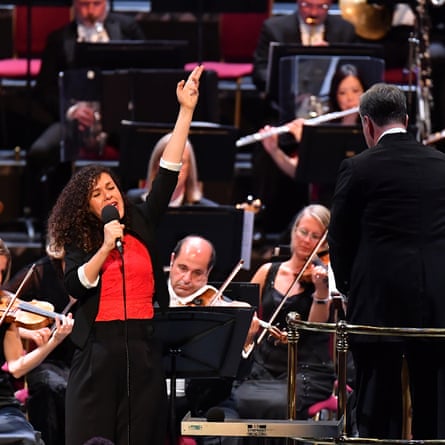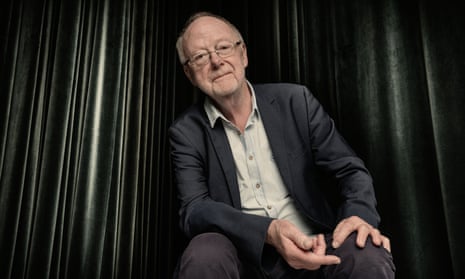Louis Andriessen, who died yesterday, was a major figure in new music for more than half a century. He began his career as a fully paid-up member of the European avant garde – his teachers included Luciano Berio, and his early works combined neoclassicism and serial techniques – but he soon began to question the musical status quo, denouncing its institutions and joining others Dutch composers to found performing groups that included classical, rock and jazz musicians. At the same time, he was forging his own creative path, with music that disregarded traditional boundaries and drew on the minimalism of Steve Reich, Philip Glass and Terry Riley as well as on Stravinsky and popular music.
In a succession of works from the mid-70s onwards he established the power of this propulsive, abrasive style and also became a hugely respected teacher – his pupils included Steve Martland, Michel van der Aa and Richard Ayres. Here are six of his key compositions.
De Staat (1976)
Composed as “a contribution to the debate about the relation of music to politics”, De Staat was Andriessen’s breakthrough work internationally, including texts from Plato’s Republic in an instrumental score of cumulative power and drive.
De Materie (1989)
Though Andriessen had composed small-scale music-theatre pieces, De Materie, an exploration of the relationship between spirit and matter originally staged by Robert Wilson, was his first work to make use of a traditional opera house, one of the institutions he had previously rejected as outmoded and conservative.
Writing to Vermeer (1999)
The second of two operatic collaborations with the film-maker Peter Greenaway has become one of Andriessen’s best-known works, mixing fiction with historical fact to create a portrait of the great Dutch painter through letters written to him by his mother, his wife and his model.
La Commedia (2008)
Andriessen’s “film opera”, his fourth large-scale stage work, is perhaps his greatest achievement. Based on Dante’s Divine Comedy, it was written in collaboration with Hal Hartley, who directed a film to be screened during the performance, while Andriessen’s score gleefully rampages across stylistic boundaries. Listen on Spotify.
Mysteriën (2013)
For almost half a century Andriessen refused to compose for a traditional symphony orchestra, preferring hard-edged, wind-based ensembles that incorporated electric guitars and basses. But he did accepted this commission from the Royal Concertgebouw Orchestra and created, in Mysteriën, a monumental and multi-layered piece, inspired by the writings of Thomas à Kempis.
The Only One (2019)

As a whole, Andriessen’s career as a composer might be seen as a journey towards ever greater musical plurality, as his frame of musical reference seemed to expand further with each new work. The song cycle The Only One, composed for the soprano Nora Fischer to poems by Delphine Lecompte, was one of his final works, and a celebration of his eclecticism. Listen on Spotify.
